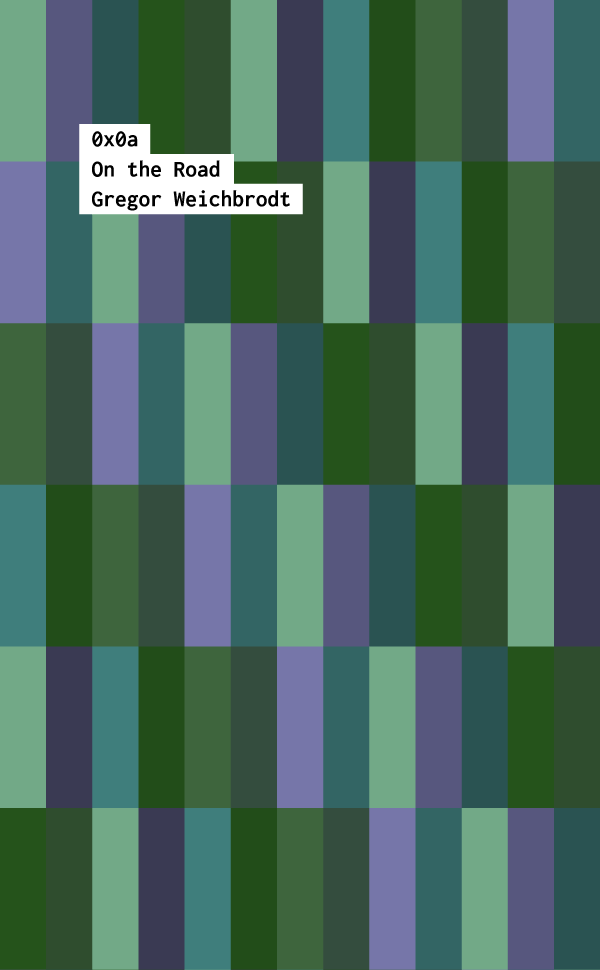Communication Design, the discipline I have been studying for the past four years, looks at the elements and techniques of narratives and appropriates them. In the case of “On the Road” I did exactly that with the character and the story of globetrotter Sal Paradise from Jack Kerouac’s novel of the same title, who ventures on a journey all across the US to find himself.

- On the Road
- Gregor Weichbrodt
- 2014
- 53973 Characters
- Download: pdf
I remember a friend showing me pictures of his last trip to South America, all the while explaining how he got there and whom he had met. This procedure went on for about an hour and in the end I was bored to death. I did not tell him that but he finally must have noticed that I was not exactly ravished by his narrations. Later that night I turned on my laptop and saw the Instagram and Facebook pictures of people who had documented their three-week paradise beginning to end. Anyone with a cell phone camera chronicles, shares, and comments on the events of their trips. Experiences like Sal Paradise’s don’t seem to be unique anymore – the romantic idea of the globetrotter is antiquated.
It is, for the technology we travel with makes the trip itself quantifiable. Because every status update silently protocols the position of its author, the trips of our online friends can be reconstructed afterwards (unless the GPS tracker of their smartphones is turned off). From point A to point B to point X in South America.
That in mind I wanted to find the waypoints Jack Kerouac had traveled in his novel “On the Road.” So I googled them. Kerouac fans had already done the hard work of collecting his stops and putting them into Google Maps. I gathered them and fed them into the Google Maps’s route planner. Because for normal users it is not possible to create routes that have more than eight stops, I wrote a script that returned the continuous turn-by-turn directions for all of the approximately 140 waypoints. The result was an itinerary of about 55 pages, including the total travel time, toll roads, and information about road work. Suddenly, a second narrative emerged: That of the GPS, the sat nav. A machine designed to simulate a human navigator, whose directions we follow when we enter foreign terrain.
Kenneth Goldsmith and Hans-Ulrich Obrist included “On the Road” in their Zurich exhibition “Poetry will be made by all.” Under an article in the Guardian that reported on the project, a commenter wrote: “You couldn’t have another Kerouac today.” The era in which young Sal Paradise was able to get lost on his journey of self-realization is over. The appropriate character for today’s Kerouacs would be the GPS route planner. Unless one does not own a smart phone. Or is high on too much mescaline.